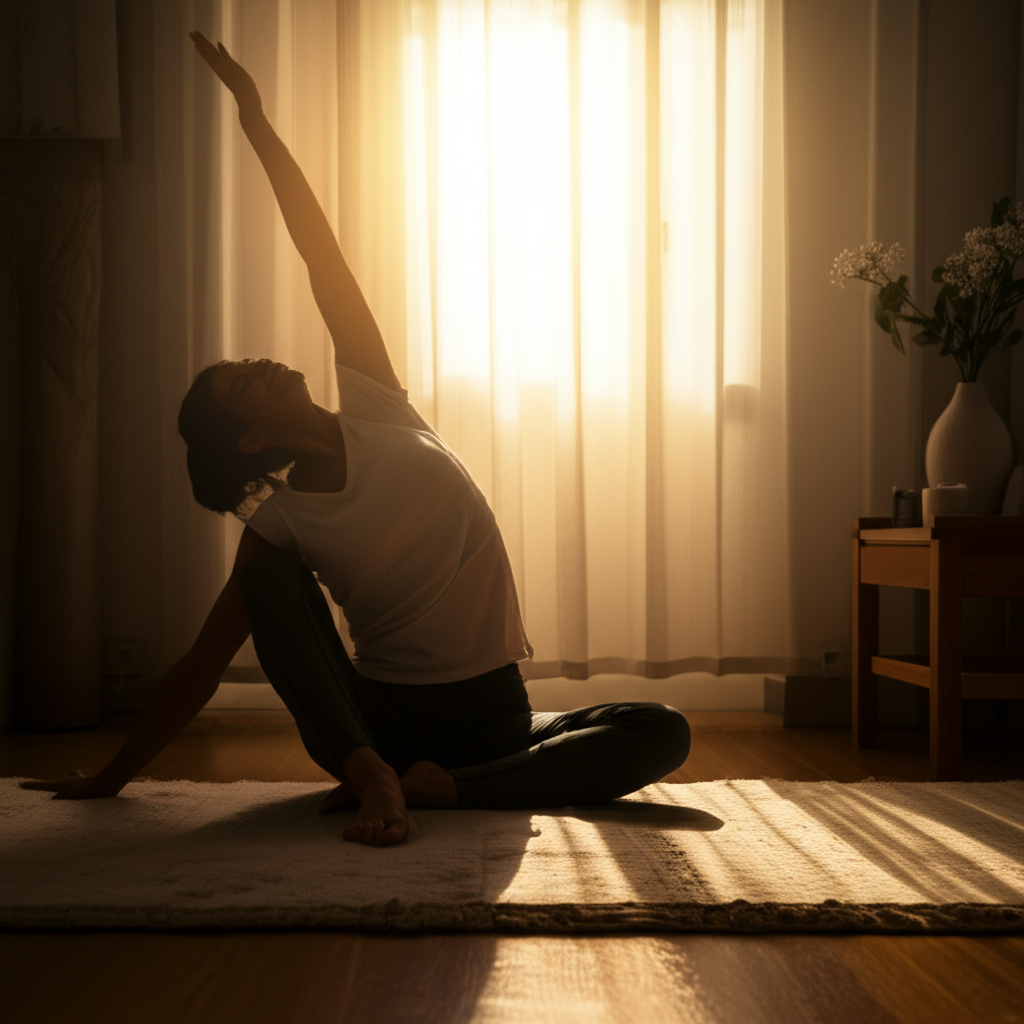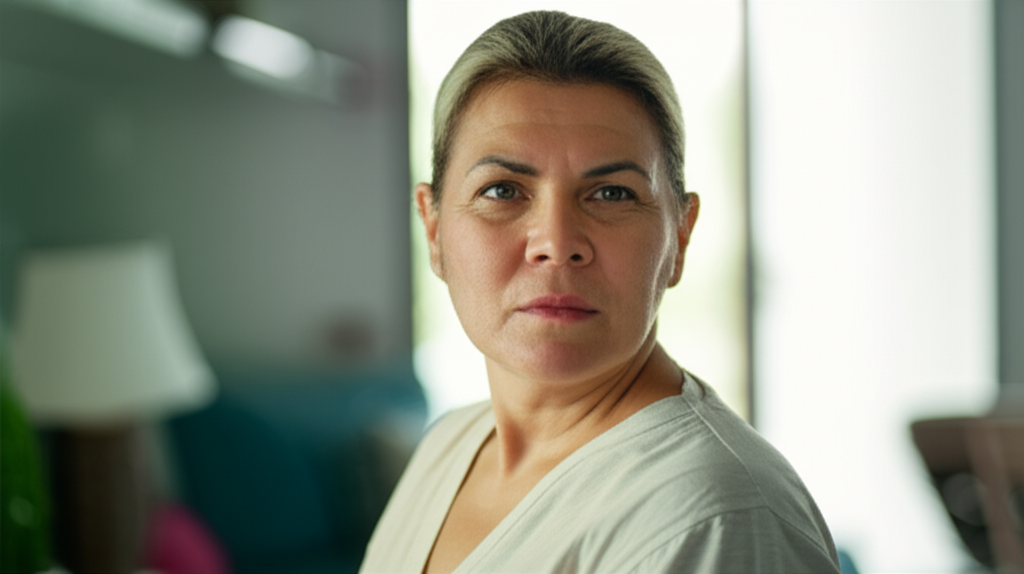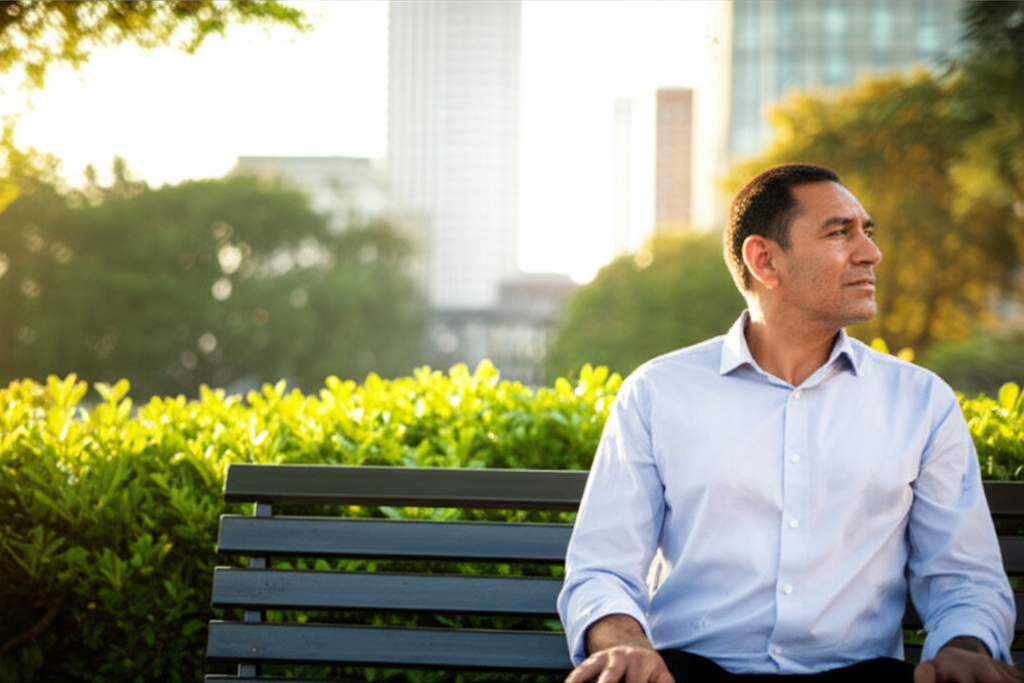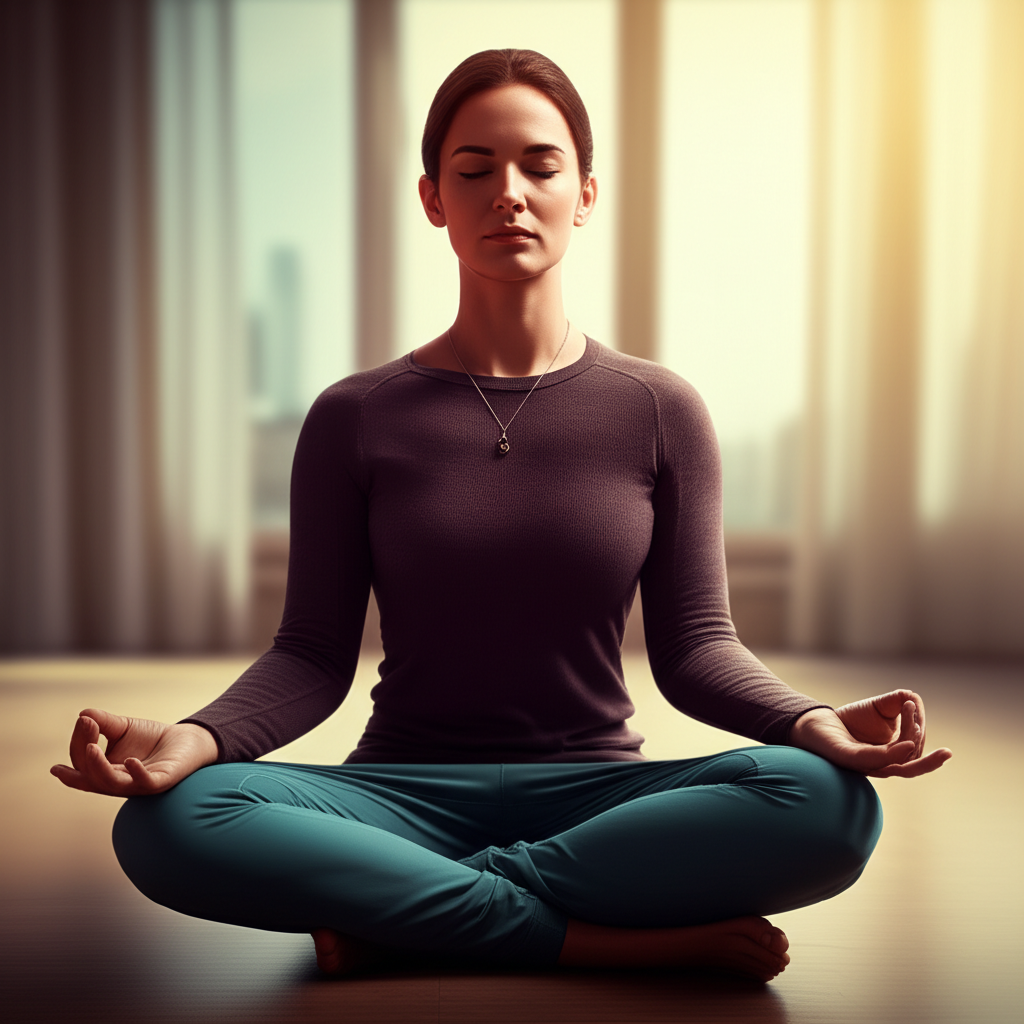Now Reading: Mindfulness vs. Meditation: Clear Differences & How to Start
-
01
Mindfulness vs. Meditation: Clear Differences & How to Start
Mindfulness vs. Meditation: Clear Differences & How to Start
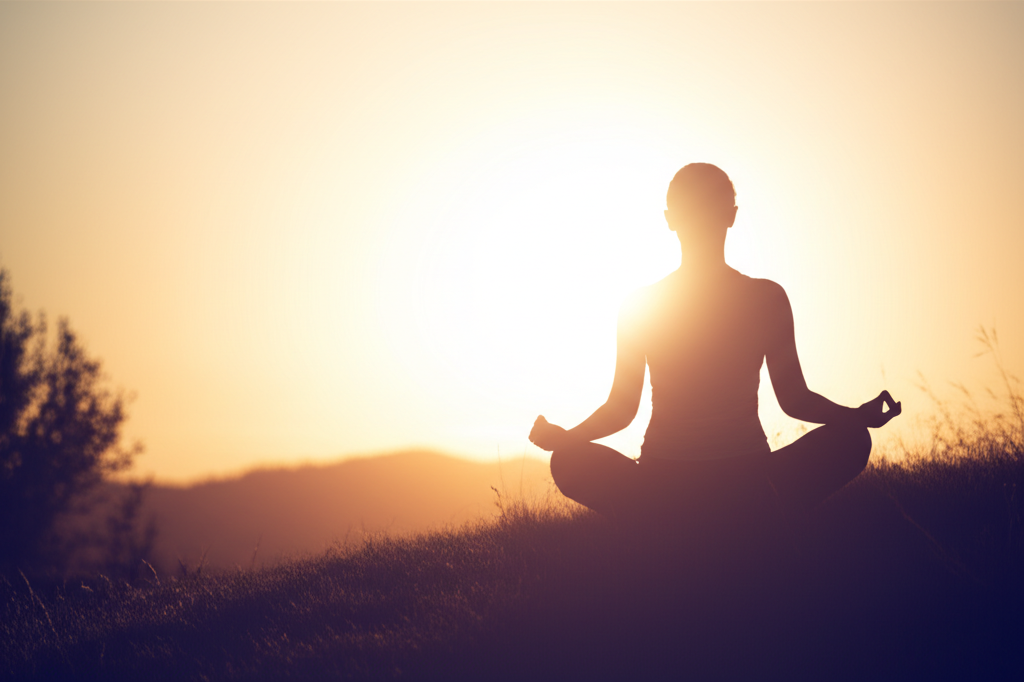
Mindfulness vs. Meditation: Finding Clarity and Simple Steps for a More Peaceful You
Have you ever found yourself a little puzzled when people use “mindfulness” and “meditation” as if they’re the exact same thing? If so, you’re in excellent company! This is a super common misunderstanding. As your compassionate guide on this journey to enhanced well-being, I’m here to gently clarify that while these two practices are deeply intertwined and wonderfully supportive of each other, they’re not quite identical. Understanding their subtle yet significant differences isn’t just about semantics; it’s about empowering you to choose the right tools for your unique needs, whether you’re navigating everyday challenges, seeking stress reduction, easing anxiety, or simply yearning for more inner peace and a richer, more present moment awareness in our busy world. So, let’s explore this together, shall we?
Are Mindfulness and Meditation the Same? Unpacking a Common Confusion
For many, “mindfulness” conjures images of serene people sitting cross-legged, eyes closed, breathing deeply. And “meditation” often brings up similar visuals. It’s easy to see why the lines get blurry, leading to a kind of conceptual tangle where people use one word when they might really mean the other.
But here’s why clarifying this distinction truly matters for your personal practice and your journey towards better mental health: once you understand the core difference, you can more effectively cultivate both a calmer mind and a richer, more engaged daily life. It helps you recognize that you don’t always need to carve out dedicated time to be “mindful,” and that meditation encompasses much more than just sitting quietly.
What is Mindfulness? The State of Present Awareness
Defining Mindfulness
At its heart, mindfulness is a state of being. It’s the simple act of being fully awake and aware of the present moment, without judgment. Imagine truly noticing the taste of your morning coffee, the warmth of the mug in your hands, the gentle aroma rising, rather than just gulping it down while your mind races ahead to your to-do list.
- Mindfulness is about bringing your attention to your thoughts, feelings, bodily sensations, and the world around you, right now.
- It emphasizes a non-judgmental awareness – simply observing what is, without labeling it as “good” or “bad,” or trying to change it. It’s about acknowledging what arises with an open, accepting mind.
- Often described as a “quality” or “capacity of the mind” that we all possess, but which often lies dormant amidst our busy lives.
- Perhaps the most widely cited definition comes from Jon Kabat-Zinn, founder of Mindfulness-Based Stress Reduction (MBSR), who describes it as: “the awareness that arises through paying attention, on purpose, in the present moment, non-judgmentally.”
Examples of Informal Mindfulness in Daily Life
The wonderful thing about mindfulness is that you don’t need a special cushion or a quiet room to practice it. You can weave it seamlessly into the fabric of your everyday life, turning routine moments into opportunities for peace:
- Mindful Eating: Really savoring each bite of your meal, noticing the textures, flavors, and aromas. Instead of rushing, you might notice the crunch of an apple, the creaminess of yogurt, or the warmth of soup.
- Mindful Walking: Feeling your feet on the ground with each step, noticing the swing of your arms, observing the sights and sounds as you move, rather than being lost in thought about your destination or past events.
- Mindful Listening: When someone is speaking, giving them your full, undivided attention. Truly hearing their words, tone, and the emotions behind them, without simultaneously formulating your response.
- Engaging Your Senses: Taking a deliberate moment to truly smell a flower, listen to the birds outside your window, feel the warmth of the sun on your skin, or appreciate the vibrant colors of a sunset. These “micro-moments” of presence are incredibly powerful.
What is Meditation? The Practice That Cultivates Awareness
Defining Meditation
If mindfulness is the state, then meditation is the practice or tool you use to cultivate that state, and many other beneficial qualities. It’s an intentional, structured exercise designed to train and focus your mind. For example, sitting quietly and focusing on the sensation of your breath is a form of meditation.
- Meditation is a formal practice where you typically set aside dedicated time and space.
- It’s an intentional exercise to cultivate specific qualities, including mindfulness, but also others like concentration, compassion, or insight.
- Think of it like going to the gym for your mind. You’re intentionally strengthening certain “mental muscles” to enhance your overall resilience and well-being.
Different Types of Meditation (Beyond Just Mindfulness)
Meditation is a wonderfully broad category, encompassing a vast array of techniques, each with its own focus:
- Mindfulness Meditation: This is a specific type of meditation where the practice involves bringing one’s attention to the breath, bodily sensations, sounds, or observing thoughts as they arise, all without judgment. It’s often the most common entry point for beginners seeking to cultivate present moment awareness.
- Concentration Meditation: Here, the focus is on a single object – it could be your breath, a mantra (a repeated word or phrase), a candle flame, or a specific sound. The goal is to calm and steady the mind by repeatedly bringing attention back to that one object whenever it wanders.
- Loving-Kindness Meditation (Metta): This powerful practice involves cultivating feelings of unconditional kindness, compassion, and warmth towards oneself, loved ones, neutral parties, difficult people, and eventually all beings. It’s wonderful for fostering empathy and reducing negative self-talk.
- Other forms include Transcendental Meditation (TM), Body Scan Meditation (which we’ll discuss as a simple starting point), Visualization Meditation, and even walking meditation (which blends formal practice with movement).
Key Differences: Mindfulness vs. Meditation At a Glance
To make it even clearer, let’s lay out the distinctions side-by-side. Think of it this way:
- Mindfulness is a state; Meditation is a practice. Mindfulness is *being* aware of your breath as you walk; meditation is *sitting down specifically* to focus on your breath.
- Mindfulness is ongoing; Meditation is often time-bound. You can be mindful all day long, integrating awareness into your daily activities like doing dishes. Meditation typically involves setting aside a specific period (e.g., 10-30 minutes of sitting quietly).
- Mindfulness is a component of some meditations; Meditation is a broader category. Mindfulness is often the *technique* or *focus* within mindfulness meditation, which is just one type of meditation. However, not all meditations (like concentration on a mantra) are primarily about mindfulness.
- Mindfulness can be secular; Meditation can have spiritual roots (though often secularized). While many meditation traditions originated in spiritual or religious contexts, both mindfulness and meditation are widely practiced today in purely secular ways, backed by scientific research, without any spiritual attachment.
Shared Benefits: How Both Practices Enhance Well-being
Despite their differences, both mindfulness and meditation practices are incredible allies in fostering your overall well-being. The scientific community has extensively researched their positive impacts, with programs like Mindfulness-Based Stress Reduction (MBSR) demonstrating tangible benefits. They really do help cultivate a calmer, more centred you:
- Stress Reduction and Anxiety Management: Both practices help calm the nervous system, reducing the physical and mental symptoms of stress and anxiety. By cultivating present moment awareness, you can break free from cycles of worry about the past or future.
- Improved Focus and Concentration: Regularly training your attention through meditation, and practicing mindfulness throughout your day, can significantly enhance your ability to stay on task and reduce distractibility.
- Enhanced Emotional Regulation and Balance: By observing thoughts and feelings without judgment, you gain greater insight and control over your emotional responses, fostering wonderful emotional balance.
- Increased Self-Awareness and Self-Compassion: These practices foster a deeper connection with your inner experience, leading to greater understanding of yourself and a kinder, more compassionate attitude towards your own struggles.
- Better Mental Clarity and Resilience: A calmer, more focused mind is better equipped to navigate life’s challenges, make clear decisions, and bounce back from adversity. They truly build your inner strength, or resilience.
How to Start Your Journey: Accessible Steps for Beginners
Feeling inspired but not sure where to begin? Don’t worry, you absolutely don’t need to become a guru overnight! The most important thing is to start small, be patient, and approach your practice with kindness. Remember, this is about nurturing yourself.
Starting with Mindfulness (Informal Practice)
You can begin cultivating daily mindfulness right away, without any special equipment or time commitment. These are simple ways to bring more presence into your everyday:
- The STOP Practice: This is a wonderful “mindful pause” you can use anytime, anywhere.
- S (Stop): Whatever you’re doing, just pause for a moment. Take a gentle break.
- T (Take a breath): Take a deep, conscious breath or two, noticing the air entering and leaving your body. Feel the sensations.
- O (Observe): Notice what’s happening around you and within you. What do you see, hear, smell, feel? What thoughts are present without judgment?
- P (Proceed): Continue with your activity, but with a renewed sense of awareness and intention.
- Mindful Moments Throughout Your Day: Choose one routine activity (e.g., brushing your teeth, washing dishes, drinking water, walking to your car) and fully engage your senses in it for just a minute or two. Notice the sensations, the sounds, the smells, the temperature, the weight. Really be *there*.
- Engaging Your Five Senses Intentionally: Pick one sense and explore it fully for a few seconds. What’s the softest thing you can feel right now? What’s the furthest sound you can hear? What’s one thing you can truly see? What do you smell? Can you taste anything? This brings you instantly into the present.
Starting with Meditation (Formal Practice)
If you’re ready for a more structured approach, starting a formal meditation practice can be incredibly rewarding and deeply transformative:
- Guidance is Key: For beginners, guided meditation is an absolute game-changer. There are many excellent apps (like Calm, Headspace – you don’t need to commit to paid versions to get started, many offer free introductions) and free resources on YouTube that provide verbal instructions, making it easy to follow along. They’re like having a kind teacher right there with you.
- Finding a Quiet Space: While not strictly necessary, finding a quiet, relatively calm environment where you won’t be disturbed for a few minutes can make it easier to focus initially. It doesn’t have to be perfect.
- Short Bursts: Don’t feel pressured to sit for an hour. Start with just 5-10 minutes daily. Consistency is far more important than duration. You can gradually increase the time as you feel comfortable and enjoy it more.
- Focus on the Breath: Many beginner meditations use the breath as an anchor. Simply sit comfortably, close your eyes if you wish, and notice the sensation of your breath as it enters and leaves your body. When your mind wanders (and it will, that’s completely normal!), gently bring your attention back to your breath without judgment.
- Body Scan Meditation: This is a fantastic way to tune into physical sensations and release tension. A guided body scan typically walks you through bringing awareness to different parts of your body, noticing any sensations (warmth, tingling, pressure, coolness) without judgment, simply observing what’s there.
Tips for Consistency and Overcoming Challenges
- Be Patient and Kind to Yourself: Your mind will wander. That’s perfectly normal and part of the practice! The goal isn’t to stop thoughts; it’s about noticing them and gently redirecting your attention. There’s no “failure” in mindfulness or meditation.
- Start Small and Build Gradually: A few minutes consistently is infinitely better than an ambitious goal you can’t maintain. Celebrate those small wins!
- No “Right” or “Wrong” Way: Personalize your practice. What feels good for you? What helps you feel more grounded? This is your journey.
- Integrate into Existing Routines: Can you do 5 minutes of guided meditation right after you wake up, or before you go to bed? Linking it to an existing habit (like brushing your teeth or drinking coffee) increases the likelihood of sticking with it.
The Beautiful Connection: How Mindfulness and Meditation Complement Each Other
The beautiful truth is that mindfulness and meditation are deeply complementary. You absolutely don’t have to choose one over the other; in fact, they work synergistically to enhance your life in profound ways.
- Think of formal meditation practice as your “gym time” for the mind. Regularly engaging in dedicated meditation sessions helps to sharpen your “mindfulness muscle,” making it easier to notice thoughts, feelings, and sensations without getting swept away. This training directly enhances your capacity for everyday presence.
- Conversely, practicing informal mindfulness moments throughout your day – like mindfully drinking your tea or taking a conscious breath before opening an email – can make your dedicated meditation sessions feel less daunting and more natural. You’re already strengthening that awareness, so sitting down for meditation feels like a natural extension, not a foreign task.
I wholeheartedly encourage you to experiment! Try a few minutes of mindful eating today. Then, perhaps try a 10-minute beginner meditation tomorrow using a free app. See what resonates with you, what helps you feel more balanced, and what supports your unique needs for stress relief, anxiety management, or greater mental clarity. Your path is your own, and the most important thing is simply to begin, taking gentle steps forward.
Cultivating a Mindful Life for Lasting Well-being
Whether you choose to embrace informal mindfulness moments, dive into a regular meditation practice, or ideally, integrate both, you are taking powerful steps towards a more balanced, peaceful, and resilient life. These practices are not just temporary fixes; they are profound skills you build over time, fostering deep and lasting positive changes in your relationship with yourself and the world around you.
You’ve absolutely got this, and remember, every small step counts on this journey. I’m here cheering you on as you cultivate a more mindful life, filled with greater peace and presence!
We’d love to hear from you! Share your experiences in the comments below, or explore more resources on our blog for practical self-care techniques and strategies for enhancing your well-being.


